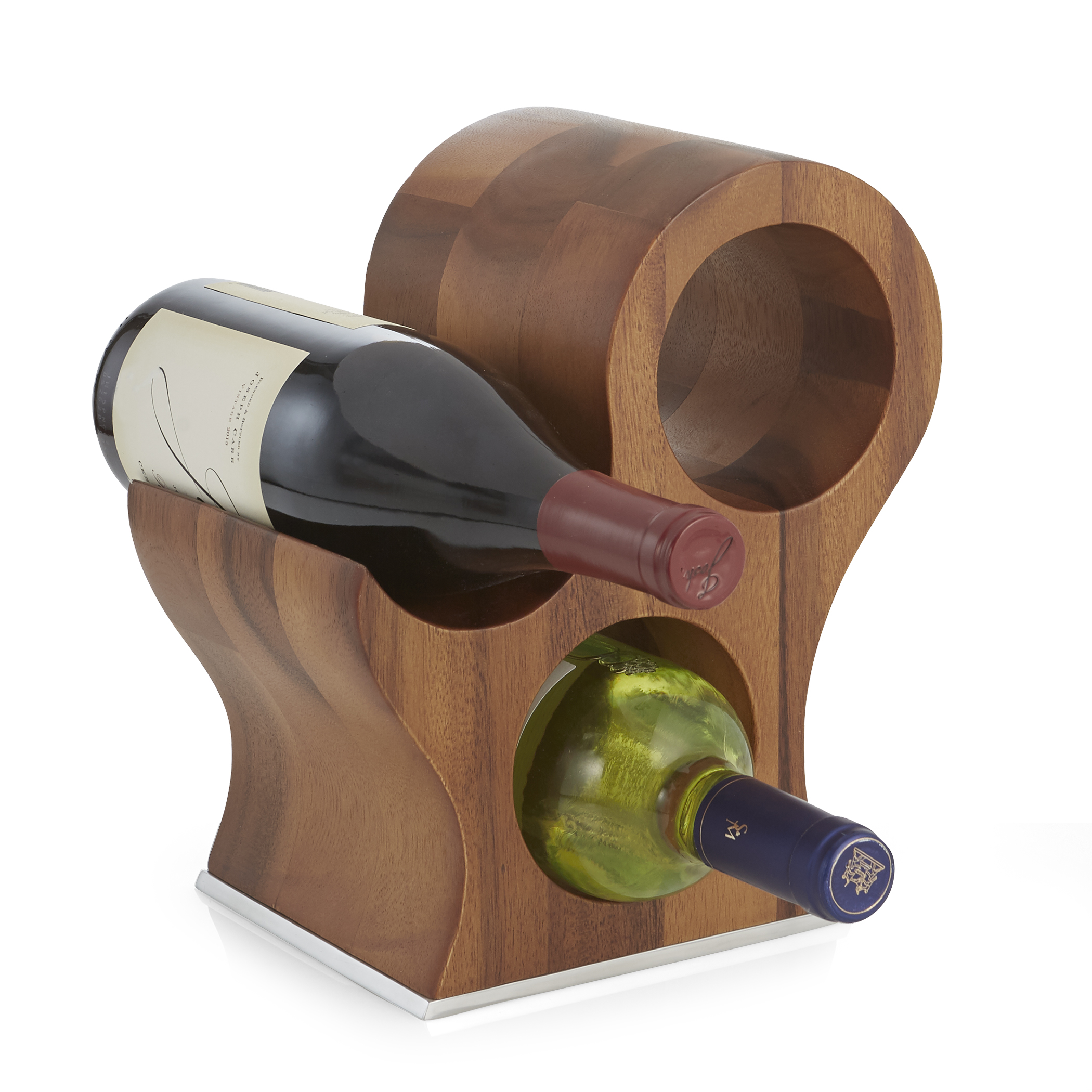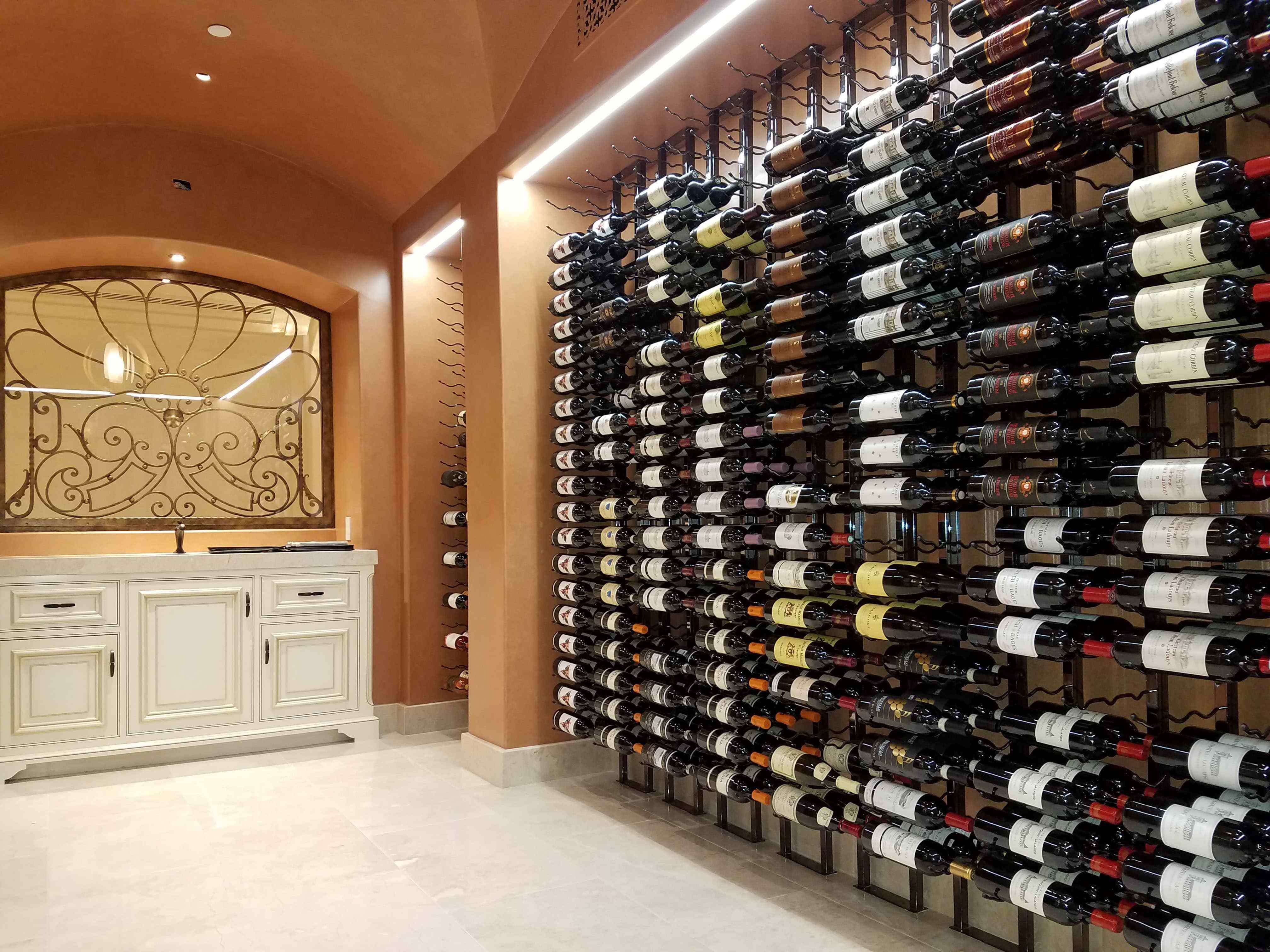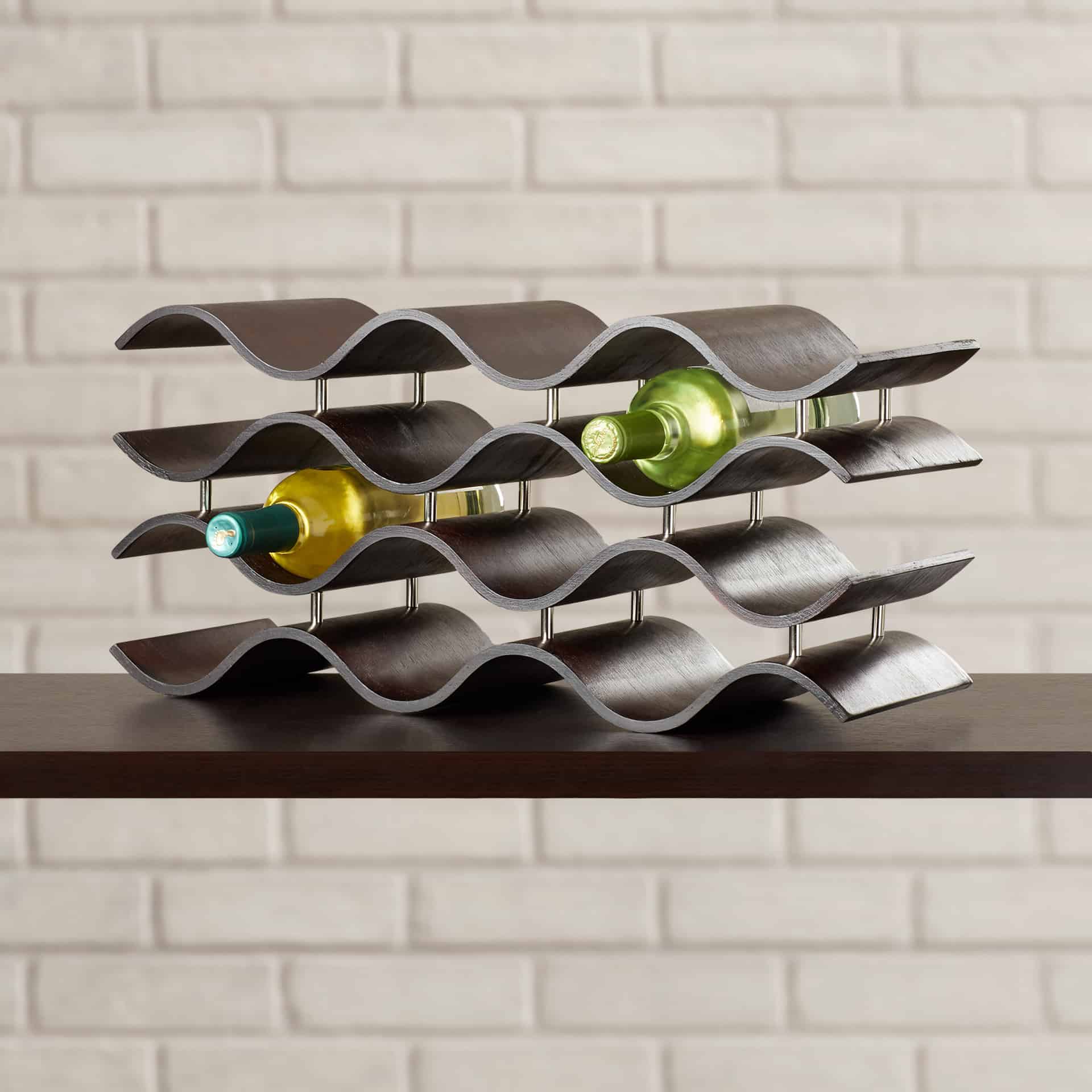Types of Wine Bottle Holder Cabinets

Choosing the perfect wine cabinet is a journey into the heart of oenophilia, a quest to find the ideal sanctuary for your cherished collection. The right cabinet not only protects your wines but also enhances your home’s aesthetic appeal. The options are diverse, each offering unique advantages and considerations.
Wine bottle holder cabinet – Selecting a wine cabinet involves careful consideration of your space, budget, and the size of your wine collection. From sleek, modern designs to rustic, traditional styles, the possibilities are as varied as the wines themselves. The type of cabinet you choose will significantly impact both the functionality and the visual impact within your home.
Types of Wine Bottle Holder Cabinets and Their Characteristics
Wine bottle holder cabinets come in a variety of styles, each designed to suit different needs and preferences. The three most common types are freestanding, built-in, and wall-mounted units. The choice depends largely on available space, desired aesthetic, and budget.
| Type | Pros | Cons | Ideal For |
|---|---|---|---|
| Freestanding | Versatile placement, easy to move, wide range of styles and sizes available. | Can take up significant floor space, may not match existing décor seamlessly. | Renters, those with flexible layouts, those wanting a statement piece. |
| Built-in | Customizable to fit specific spaces, seamless integration with kitchen or dining area, often offers superior storage capacity. | Expensive installation, requires professional installation, less flexible in terms of relocation. | Homeowners with dedicated wine storage areas, those wanting a fully integrated look. |
| Wall-Mounted | Space-saving, ideal for smaller spaces, can add a decorative element to a wall. | Limited storage capacity, may not be suitable for larger bottles, requires secure wall mounting. | Apartments, small homes, those wanting to display a smaller collection. |
Materials Used in Wine Cabinet Construction
The material used in a wine cabinet significantly impacts its durability, aesthetic appeal, and price. Common materials include wood, metal, and glass, each offering distinct characteristics.
Wood: Wood cabinets offer a classic, elegant look. Hardwoods like oak and mahogany are durable and age gracefully, developing a rich patina over time. They offer excellent insulation, protecting wines from temperature fluctuations. However, they can be more expensive than other materials and require regular maintenance to prevent damage from moisture. A beautifully crafted oak cabinet, for instance, might feature intricate carvings and a rich, dark stain, exuding a sense of old-world charm.
Metal: Metal cabinets, often made from stainless steel, offer a modern, sleek aesthetic. They are highly durable and resistant to damage, making them a practical choice for busy households. Stainless steel’s inherent resistance to rust and corrosion ensures longevity. A brushed stainless steel cabinet, for example, could complement a contemporary kitchen design with its clean lines and minimalist appeal.
Glass: Glass cabinets allow for the display of your wine collection, adding a touch of elegance and sophistication. However, glass is more fragile than wood or metal and requires careful handling. A glass-fronted cabinet, perhaps with oak framing, can showcase a carefully curated selection of bottles, turning the cabinet itself into a decorative element.
Storage Capacities and Configurations
Wine cabinet storage capacity varies widely depending on the cabinet’s size and design. Factors to consider include the number of bottles you wish to store, the size of the bottles (standard 750ml bottles, magnums, etc.), and the desired shelf arrangement. Some cabinets offer specialized compartments for different bottle sizes, while others provide flexible shelving systems to accommodate varying needs. A large built-in cabinet, for example, might hold hundreds of bottles, while a smaller wall-mounted unit might accommodate only a dozen.
Consideration should also be given to the arrangement of shelves. Some cabinets use traditional horizontal shelving, while others incorporate slanted shelves to maximize space and improve bottle visibility. The inclusion of drawers for accessories, such as wine glasses or bottle openers, can further enhance the functionality of the cabinet. A well-designed cabinet might even include temperature control for optimal wine storage.
Features and Functionality

A wine bottle holder cabinet is more than just elegant storage; it’s a crucial element in preserving the quality and longevity of your cherished vintages. The features you choose will directly impact the lifespan and enjoyment of your wine collection. Selecting the right cabinet involves understanding its capabilities and how they contribute to optimal wine preservation. This careful selection ensures your investment in fine wines remains a source of pleasure for years to come.
The functionality of a wine cabinet extends beyond simple storage. It’s about creating a controlled environment that mimics the ideal cellar conditions, protecting your wine from the damaging effects of light, temperature fluctuations, and excessive humidity. This ensures your wines age gracefully, developing their full potential and delivering a superior tasting experience when the time is right.
Key Features of Wine Bottle Holder Cabinets
Choosing the right wine cabinet requires careful consideration of several key features. These features work in concert to create the perfect environment for long-term wine storage, preventing premature aging and preserving the integrity of your collection.
- Temperature Control: Maintaining a consistent temperature is paramount. Fluctuations can disrupt the aging process, leading to undesirable changes in the wine’s flavor profile.
- Humidity Control: Proper humidity levels prevent the cork from drying out, which can lead to oxidation and spoilage. A consistently humid environment keeps the cork supple and airtight, protecting the wine inside.
- Locking Mechanisms: Security features such as locks protect your valuable collection from theft or unauthorized access, providing peace of mind.
- Lighting: UV-resistant lighting allows you to admire your collection without exposing the wine to harmful ultraviolet rays, which can accelerate aging and affect the color and flavor.
- Vibration Reduction: Minimizing vibrations, often achieved through specialized shelving and cabinet construction, prevents sediment disturbance and ensures the wine remains undisturbed during aging.
- Capacity and Shelf Configuration: Consider the size of your collection and choose a cabinet with sufficient capacity and shelves designed to accommodate various bottle sizes and shapes.
Benefits of Temperature and Humidity Control
Temperature and humidity control are not mere luxuries; they are fundamental to proper wine preservation. These two factors work synergistically to safeguard your wine investment, ensuring its quality remains intact for years to come. Maintaining optimal conditions prevents premature aging and ensures your wines develop their full potential.
Consistent temperatures, ideally between 55°F and 60°F (13°C and 15°C), slow down the aging process, allowing the wine to evolve gradually and develop complex flavors. Fluctuations can cause premature aging, leading to a loss of quality. Similarly, controlled humidity, typically between 50% and 70%, prevents the cork from drying out, thus maintaining a tight seal and preventing oxidation. A dry cork allows air to enter the bottle, leading to the wine’s deterioration.
Optimal Placement and Environment for Wine Storage
The location of your wine cabinet significantly impacts its effectiveness. Careful consideration of environmental factors is crucial to ensure the cabinet maintains ideal conditions for wine preservation. Placement should be strategic to minimize external influences that could compromise the controlled environment within the cabinet.
Imagine an infographic: A clean, minimalist design using a muted teal background. The central focus is a stylized image of a wine cabinet, depicted in a warm oak finish. Arrows emanate from the cabinet, each pointing to a different environmental factor and labeled with clear, sans-serif font (e.g., “Away from Direct Sunlight,” “Consistent Temperature,” “Moderate Humidity”). Each arrow leads to a circular graphic representing the factor, using icons like a sun, thermometer, and water droplet. The icons are accompanied by brief explanations in a smaller, but easily readable, font. The overall color scheme is calming and sophisticated, with a touch of elegance to reflect the nature of fine wine storage. The infographic uses a color palette of teal, warm oak brown, and muted gold accents to convey a sense of sophistication and reliability. The font choice is a modern, clean sans-serif typeface, ensuring readability and a modern aesthetic. The graphic elements, such as the arrows and circular icons, are simple and uncluttered, making the information easily digestible. The infographic is designed to be visually appealing and informative, providing a clear and concise guide to optimal wine cabinet placement and environmental considerations.
Style and Design Considerations: Wine Bottle Holder Cabinet

Selecting a wine bottle holder cabinet isn’t just about functionality; it’s about enhancing your home’s aesthetic. The right cabinet can transform a simple storage solution into a stunning focal point, reflecting your personal style and complementing your existing décor. Choosing wisely involves considering the overall style, the cabinet’s design elements, and its placement within your home.
Wine Cabinet Styles and Home Decor Themes
The style of your wine cabinet should harmonize with the overall ambiance of your home. A mismatch can disrupt the visual flow, while a well-chosen piece can elevate the entire space.
A sleek, minimalist modern wine cabinet with stainless steel accents would beautifully complement a contemporary home with clean lines and neutral color palettes. Imagine it nestled against a white wall, its polished surface reflecting the light, a perfect counterpoint to the sharp angles of modern furniture.
In a traditional home filled with warm woods, antique furniture, and perhaps a touch of ornate detailing, a classic wooden wine cabinet with intricate carvings or a rich, dark stain would feel perfectly at home. Picture it positioned in a cozy dining room, its presence adding a touch of old-world charm.
For a rustic farmhouse or cottage-style home, a reclaimed wood wine cabinet with a distressed finish would bring a touch of natural, lived-in beauty. Envision it in a kitchen, its weathered appearance blending seamlessly with exposed beams and stone countertops, adding a layer of character and warmth.
Design Elements Contributing to Aesthetic Appeal
Several design elements work together to create the overall visual impact of a wine bottle holder cabinet. Careful consideration of these elements can significantly elevate the cabinet’s aesthetic appeal and its contribution to your home’s décor.
The finish of the cabinet is paramount. A high-gloss finish offers a sleek, modern look, while a matte finish provides a more understated elegance. Wood finishes range from light and airy to dark and dramatic, each influencing the overall mood. Consider the existing color palette of your room when making your selection.
Hardware, such as knobs, pulls, and hinges, plays a crucial role in the cabinet’s overall style. Modern cabinets often feature minimalist handles, while traditional pieces may incorporate ornate or antique-style hardware. The material of the hardware—metal, ceramic, or wood—further contributes to the aesthetic.
Glass doors offer a functional and aesthetic advantage. They showcase your wine collection, acting as a decorative element in themselves. The type of glass—clear, frosted, or textured—can impact the overall look, adding to the cabinet’s visual appeal. Furthermore, the frame surrounding the glass doors can be designed to match or contrast with the cabinet’s main structure, creating visual interest.
Integrating Wine Bottle Holder Cabinets into Different Home Areas
The placement of your wine cabinet can significantly impact its functionality and aesthetic contribution. Strategic placement ensures both practicality and visual harmony.
Kitchen Integration: In a kitchen, a wine cabinet can be seamlessly integrated into existing cabinetry, creating a built-in look. A smaller, under-counter cabinet could be placed near the bar area, while a larger cabinet might form part of a kitchen island. The cabinet’s style should complement the kitchen’s overall design, creating a cohesive and visually appealing space.
Dining Room Placement: In a dining room, a wine cabinet serves as both a functional storage solution and a decorative element. It can be placed against a wall, acting as a backdrop for the dining table, or positioned in a corner to maximize space. The cabinet’s style should complement the dining room’s furniture and overall ambiance. Consider adding decorative elements such as lighting to enhance its visual appeal.
Basement Setup: A basement wine cellar can be a stunning addition to a home. A large wine cabinet could serve as the centerpiece, with additional storage solutions placed around it. Consider adding climate control to maintain the ideal temperature and humidity for wine storage. Lighting can transform the space into a sophisticated wine cellar, enhancing both the functionality and aesthetic appeal. The cabinet’s design should complement the basement’s overall style, whether it’s rustic, modern, or traditional.
